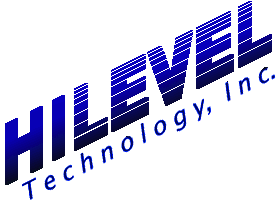|
ETSNT gives you the power to conserve Analysis memory with the MASK and UNMSK commands. These functions are defined in the Program field of the Vectors window. Clearly, you must be operating in the Programmed rather than Sequential mode as shown to the upper right. In the Vectors window shown to the right we see a pattern generator
program defined to repeat vector 7 four times (the LOAD value plus one).
Your actual program may have a LOAD value of hundreds or thousands, or
you might use the CJMP instruction to loop through a series of vectors
many times. But the MASK feature works the same in any instance.
Executing our vectors by clicking the RUN button or by pressing the
button on the TestBox will yield a capture in the Analysis window similar
to the example at the right. Note the four captures of vector 7.
To use the MASK function, go back to the Vectors window and place the
text cursor in the Program field. Enter the command “MASK”
at the vector preceding the LOAD instruction. Also enter an UNMSK
command at the vector immediately following the LOOP. See the example
to the right.
A view of the Analysis window after again clicking RUN shows us that the MASKed vector ranges are excluded from the capture, as shown to the right. This not only conserves Analysis memory, but can make viewing and managing your test results easier by excluding redundant “uninteresting” vectors from the capture.
Also See: Q'nApp #L7: Pattern Generator Looping
QL33.zip is a zipped Word file of this Q'nApp. Click your browser's Back button to return to
the Q'nApps
index.
|
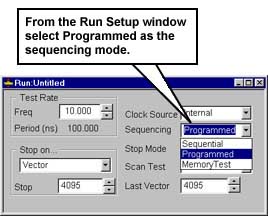
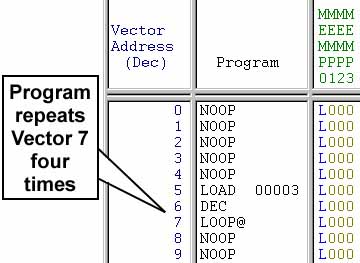
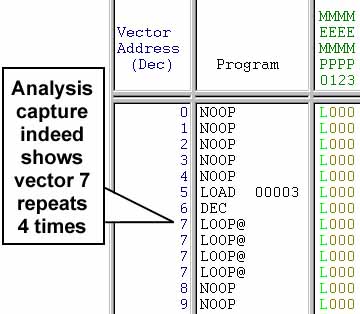

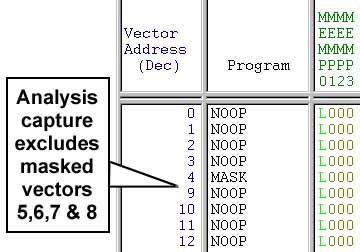
|
